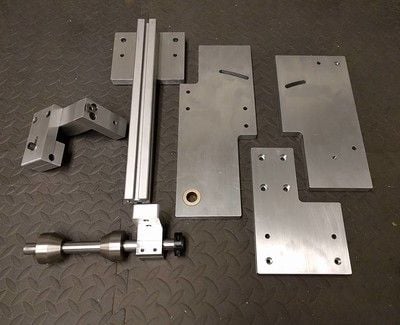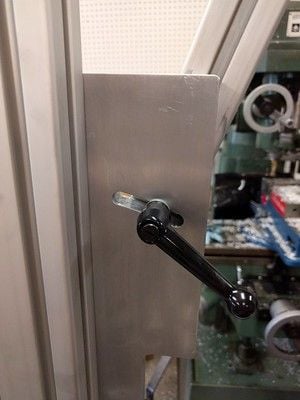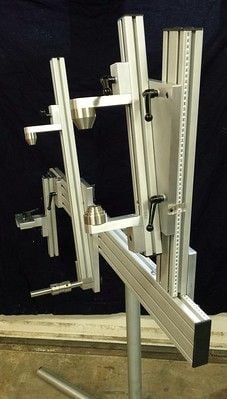First off, Tanner W. admits that his jig is an inexpensive version of the Arctos jig, but his use of 1/4" plate to support the bottom bracket is a bit flimsy and his short standoffs don't allow much access for tacking.
I wouldn't call Kris Henry's jig a "hack" of Tanner W.'s jig. His jig is also an Arctos based design, but he made some improvements. The most notable improvements are the actual pivot at the bottom bracket, instead of a virtual one and the dummy axle holder that drops out the bottom. This allows you to remove a fully tacked frame from the jig by raising the seat tube and head tube cones and rocking the frame back to remove it from the jig without moving any of the settings. The reason for Kris Henry's angled standoff is better access to the jig side of the frame for tacking the head tube joints. He has since abandoned those angled standoffs and is using straight standoffs.
There is a simpler way to make the clamping mechanism for the seat tube and head tube angle adjustments. The curved slots in these plates allow me to attach a handle to the t-slot on the extrusion through the back side of the plate. They don't even have to be curved, since the t-nut will float in the slot when you loosen the clamping handle.


